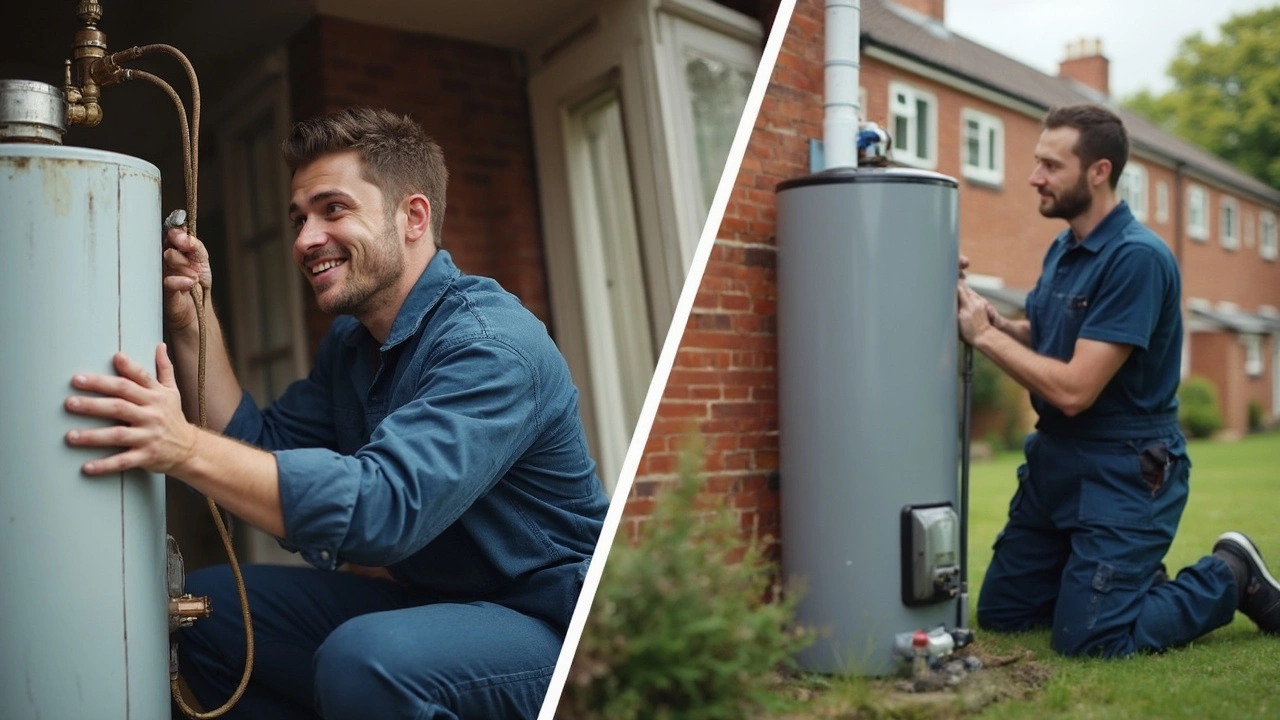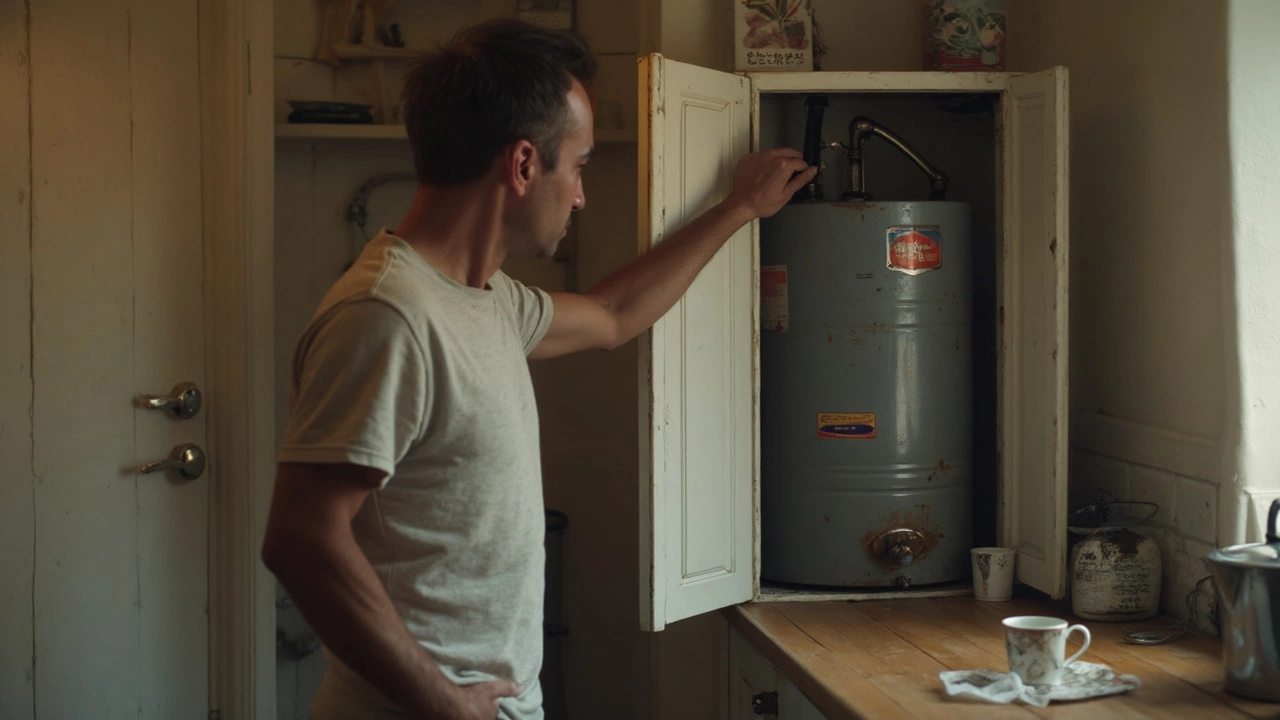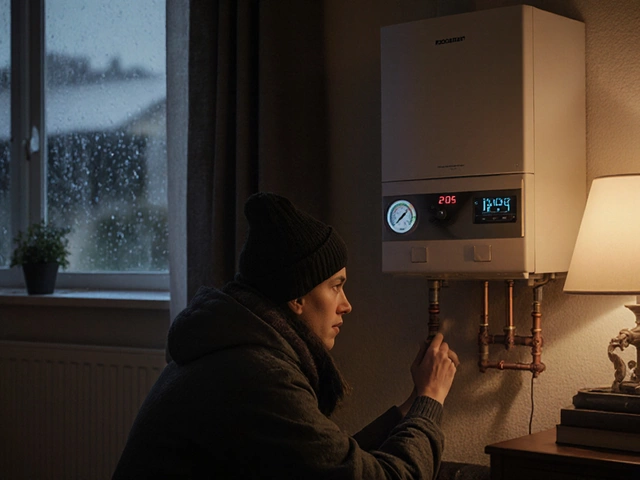Dealing with a water heater that’s hit the two-decade mark? Here’s the deal—most water heaters don’t last that long. If yours is still kicking after 20 years, you’re in rare company. That said, age isn’t kind to these appliances, and repairs might not get you as much mileage as you hope.
Before grabbing your toolbox or calling in a pro, think about what you’re dealing with. A water heater this old probably uses way more energy than new ones. You might notice longer wait times for hot water, odd noises, or even rusty water coming from your taps. All red flags that things are breaking down on the inside.
If you’re facing leaks, persistent pilot light troubles, or the thing just can’t keep up with your hot shower needs, it’s not just an inconvenience—it could be a sign that it’s on its last legs. Even a simple repair might be like using duct tape on a sinking ship. So, before you pay for a fix, ask yourself if patching up a 20-year-old heater really makes sense.
- How Long Does a Water Heater Last?
- What Breaks Down in Old Water Heaters
- Cost of Repairs vs. Replacement
- When It's Time to Let Go
How Long Does a Water Heater Last?
Here’s what most people don’t realize: a typical water heater is built to last about 8 to 12 years. That’s the average if you’re talking about standard tank-style heaters that you find in most homes. If you’ve got a tankless model, you might squeeze out closer to 15 or even 20 years, but we’re talking best-case scenarios with regular maintenance.
The water quality in your area makes a huge difference. Hard water (loaded with minerals) can cut the life of your heater by several years. So can poor maintenance, like never flushing out the tank or skipping safety checks.
Here’s a quick table to show average lifespans by type:
| Heater Type | Average Lifespan |
|---|---|
| Standard Gas (Tank) | 8–12 years |
| Standard Electric (Tank) | 10–12 years |
| Tankless (On-Demand) | 15–20 years |
So, if your water heater has outlived a dog, a couple of old cars, and maybe even some of your furniture, it’s already punched above its weight. Pushing repairs on a unit past 15 years is rolling the dice.
- If you’re unsure how old yours is, look for the serial number and check the manufacturer’s website. Most serials encode the manufacture date.
- No hot water, rusty water, or weird banging sounds are usually the first signals your heater is getting tired.
This is why anybody thinking about water heater repair for a model past its prime needs to weigh if it’s just a short-term fix.
What Breaks Down in Old Water Heaters
Once a water heater hits 20 years, a lot of stuff inside simply wears out. The main parts that give you trouble are usually the tank, heating element, thermostat, and the sacrificial anode rod. Here’s what actually happens to them:
- Tanks rust from the inside out. Even with a glass lining, years of hot water mean gradual corrosion, especially after the anode rod—that chunk of metal meant to rust instead of the tank—finally dissolves. When rusty water shows up, that’s a dead giveaway your tank is pretty much cooked.
- Heating elements burn out. In electric heaters, those metal coils don’t last forever. Mineral scaling (think hard water deposits) shortens their life, so you’ll start running out of hot water fast.
- Gas burners clog or corrode. Older gas units can wind up with burners full of dust or rust, which stops them from heating water evenly. If you see orange flames or weird smells, that’s probably what’s going on.
- Thermostats get flaky. The thermostat is like the brains of the operation, and over time, it stops reading water temperature right. You’ll get water that’s scalding hot one moment and lukewarm the next.
To put it in perspective, check out how common different issues are in water heaters once they pass the 10-year mark:
| Component | Percent Reporting Failure (after 10+ years) |
|---|---|
| Tank corrosion/leak | 65% |
| Heating element failure | 25% |
| Thermostat malfunction | 15% |
| Gas burner problem | 10% |
| Anode rod gone | Nearly 100% |
Signs of these problems include strange banging or popping noises, water that smells like metal, and leaks around the base. If you notice any of these, chances are good your water heater is trying to tell you it’s just about done for. Fixing one thing might not stop another part from failing next month.

Cost of Repairs vs. Replacement
When a water heater repair bill lands on your lap, you’ve got to weigh the numbers before making a move. For an old water heater, repair costs can stack up fast—and sometimes, they don’t even fix the root problem for long.
Here’s what you might see on your invoice:
- Heating element: $150 - $300 installed
- Thermostat: $100 - $250 installed
- Pressure relief valve: $75 - $200 installed
- Flush and tune-up: $80 - $200
But these numbers are just the start. Old tanks are prone to leaks or rust from the inside out. Once you see rust or water at the base, repairs won’t cut it—replacement’s your only shot.
Now, compare that to getting a replacement:
| Repair Type | Avg. Cost (USD) |
|---|---|
| Basic Parts (thermostat, valve, element) | $100 - $300 each |
| Major Repair (multiple issues) | $350 - $800+ |
| Full Replacement (standard tank) | $900 - $1,800 |
| Full Replacement (tankless) | $1,500 - $3,000 |
Any single repair under $300 might be okay for a newer heater. But on a 20-year-old unit, you’re probably just delaying the inevitable. Most brands back their water heaters for around 6 to 12 years. If yours has doubled that, it doesn’t owe you a thing.
The kicker? Older units are energy hogs. Swapping to a new model (even a budget one) can actually save you $50 or more on yearly utility bills. Tankless heaters can cut that cost even more, though they cost more up front. So when the repair quote hits half the cost of a new heater, it’s usually smarter to invest in something that’ll last another decade or two—without all the headaches.
When It's Time to Let Go
Hanging onto a 20-year-old water heater is usually more about habit than it is about wisdom. The truth is, most standard tank water heaters are built to last about 8-12 years. Some might squeeze out a few more, but at two decades, your unit is far past its prime.
So how do you know when it’s time to quit pouring money into it? Here’s a quick checklist to help you decide:
- Leaking Tank: Water pooling around the base almost always means internal corrosion. That’s game over for the tank itself. No repair can fix a rusted tank for good.
- Inefficient Performance: Noticing lukewarm showers or uneven water temps? Old heaters lose their punch. New models heat faster and hold temps better, saving you on your energy bill.
- Frequent Repairs: If you’re calling your repair guy more than once a year, the costs add up fast. One big fix on an ancient unit could cost as much as half a replacement.
- Rising Energy Bills: An old water heater works harder, costing you money every month. According to the Department of Energy, replacing a 20-year-old unit can cut water heating costs by up to 50% with a new efficient model.
- Rusty or Discolored Water: If you spot rusty water coming out of the hot tap, that’s a sign your tank is corroding from the inside. That’s not just a cosmetic issue—your water could be unsafe.
Still wondering about actual numbers? Check out how repair costs stack up versus getting a new heater:
| Repair Type | Average Cost (USD) |
|---|---|
| Replace Heating Element | $200-$300 |
| New Thermostat | $150-$250 |
| T&P Valve Replacement | $100-$200 |
| Replace Full Water Heater | $900-$2,500 |
If repairs are starting to hit the $400+ mark, most pros will tell you putting that cash toward a new system makes way more sense.
Bottom line? If you’re dealing with leaks, rising bills, or unreliable hot water after 20 years, it’s a smarter long-term move to stop fixing the old unit. Upgrading isn’t just about hot showers—it’s about safety, savings, and peace of mind. The money you save on energy bills will gradually pay off that new water heater, and you won’t have to worry every time you turn on the tap.





